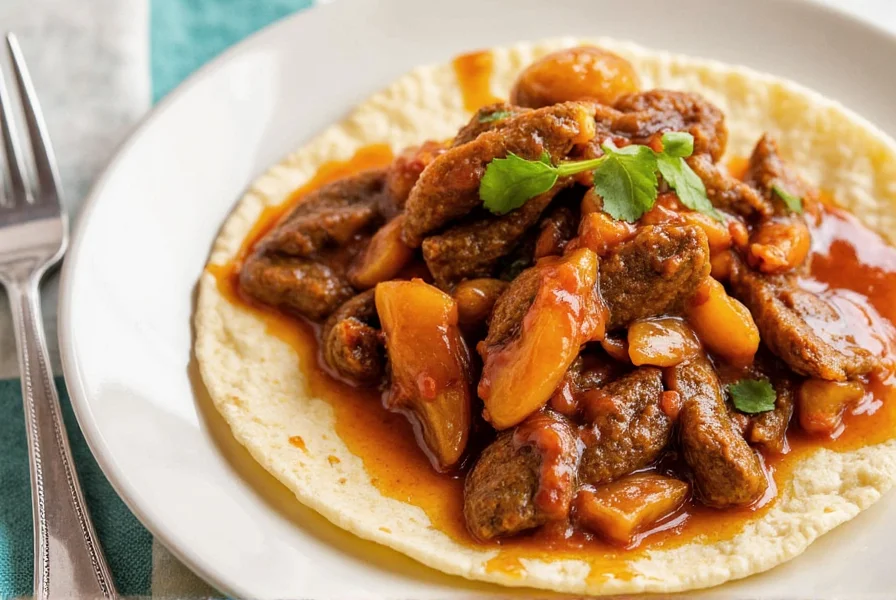A dried jalapeño is most commonly called "chipotle" when smoked during the drying process. If simply air-dried without smoking, it's referred to as "dried jalapeño" or "dried red jalapeño" (if ripe). Chamoy is a Mexican sauce made from dried chilies, fruit, and spices, but "chamoy pepper" is not a standard term for dried jalapeños.
In this article, we'll clarify the naming confusion, explain the key differences between smoked and air-dried varieties, and show you how to use them effectively in cooking. Let's dive in!
Table of Contents
- What Exactly Is a Dried Jalapeño?
- Common Names for Dried Jalapeños
- Chipotle vs. Regular Dried Jalapeños
- How to Use Dried Jalapeños in Your Kitchen
- Buying Guide: What to Look For
- Frequently Asked Questions About Dried Jalapeño Names
- Conclusion: Spice Up Your Life!
What Exactly Is a Dried Jalapeño?
Jalapeños are medium-heat chili peppers originating from Mexico. When fresh, they're commonly eaten pickled or stuffed. But when allowed to ripen fully (turning red) and then dried, they develop new flavor profiles and specific naming conventions based on the drying method.
The key distinction lies in the drying process: air-dried jalapeños retain their natural flavor, while smoked jalapeños (chipotles) gain a deep, smoky character. This difference significantly impacts how they're used in recipes.
Common Names for Dried Jalapeños
Here are the accurate terms you'll encounter:
- Dried Jalapeño: Refers to jalapeños air-dried without smoking. Often called "dried red jalapeño" when dried after ripening.
- Chipotle: Specifically denotes jalapeños that have been smoked AND dried. This is the most recognized term for smoked dried jalapeños.
| Name | Description | Flavor Profile | Best Used In |
|---|---|---|---|
| Dried Jalapeño | Air-dried mature jalapeño (green or red) | Mildly earthy, slightly spicy | Soups, stews, chili, dry rubs |
| Chipotle | Smoked and dried jalapeño | Deeply smoky, moderately hot | Salsas, marinades, barbecue sauces |
Chipotle vs. Regular Dried Jalapeños: What's the Difference?
The critical distinction is in the drying process. Chipotles undergo smoking before drying, while regular dried jalapeños are simply air-dried.

Chipotle Peppers
- Origin: Smoked and dried jalapeños, traditionally used in Mexican cuisine.
- Flavor: Rich, smoky, with medium to high heat.
- Form: Often sold in adobo sauce (tomato-based sauce with vinegar and spices).
Regular Dried Jalapeños
- Origin: Sun-dried or oven-dried ripe jalapeños (usually red).
- Flavor: Earthy, vegetal undertones with mild to moderate heat.
- Form: Typically found whole, crushed into flakes, or powdered.
| Characteristic | Chipotle | Dried Jalapeño |
|---|---|---|
| Processing | Smoked then dried | Air-dried naturally or mechanically |
| Flavor | Smoky, robust | Earthy, mildly spicy |
| Heat Level | Medium-High | Mild-Medium |
| Best Use | Sauces, salsas, braises | Seasonings, soups, rubs |
How to Use Dried Jalapeños in Your Kitchen
Once you've selected the right dried jalapeño variety, here's how to maximize their flavor:
1. Make Homemade Salsa or Hot Sauce
Rehydrate chipotles or dried jalapeños in warm water or broth, then blend with garlic, onion, lime juice, and salt. Add tomatoes or tomatillos for extra body.
2. Add Depth to Soups and Stews
Toss whole dried jalapeños or chipotles into your next pot of chicken noodle soup or beef stew. The slow simmer draws out flavor without overpowering the dish.
3. Create Flavorful Dry Rubs
- Grind dried jalapeños into powder using a spice grinder.
- Mix with paprika, cumin, garlic powder, and brown sugar for a killer BBQ rub.
4. Infuse Oils or Vinegars
Place whole dried jalapeños in a bottle of olive oil or white vinegar and let sit for 1-2 weeks. Use the infused liquid to add subtle heat to salads, marinades, or drizzled over grilled veggies.
5. Sprinkle as a Finishing Touch
Crush dried jalapeños into flakes and sprinkle over pizzas, nachos, or even popcorn for a quick spicy kick.
Buying Guide: What to Look For When Purchasing Dried Jalapeños
When shopping for dried jalapeños, consider these factors:
Types Available
- Whole dried jalapeños: Ideal for controlling heat and texture in recipes.
- Jalapeño flakes or powder: Convenient for seasoning blends and baking.
- Chipotles in adobo: Pre-soaked in flavorful sauce, perfect for sauces and marinades.
Key Features to Look For
| Feature | Why It Matters | Recommendation |
|---|---|---|
| Pepper Color | Red jalapeños are riper and sweeter; green ones are milder | Choose red for richer flavor |
| Drying Method | Natural sun-dried vs industrial methods affect flavor | Look for "sun-dried" or "slow-dried" labels |
| Packaging | Well-sealed packaging preserves flavor and aroma | Opt for vacuum-sealed bags or jars |
Top Products to Consider
- La Costeña Chipotles en Adobo
- Features: Soft, tender chipotles soaked in tangy adobo sauce.
- Advantages: Ready-to-use, great for instant flavor boosts.
- Use Cases: Sauces, dips, enchiladas.
- Audience: Home cooks and professional chefs alike.
- Occasions: Everyday meals, meal prep, weekend grilling.

- Frontier Co-op Dried Jalapeño Flakes
- Features: Organic, finely ground jalapeño flakes with consistent texture.
- Advantages: Easy to sprinkle into blends or baked goods.
- Use Cases: Seasoning blends, pizza toppings, spice rubs.
- Audience: Health-conscious cooks, DIY spice lovers.
- Occasions: Quick weeknight meals, homemade spice gifts.
- El Yaque Whole Dried Red Jalapeños
- Features: Whole dried red jalapeños with bold color and aroma.
- Advantages: Perfect for rehydrating or infusing oils.
- Use Cases: Making sauces, soups, or custom spice mixes.
- Audience: Culinary hobbyists and chili enthusiasts.
- Occasions: Weekend cooking projects, family dinners.
Frequently Asked Questions About Dried Jalapeño Names
What is a dried jalapeño called?
A dried jalapeño is most commonly called "chipotle" when it has been smoked during the drying process. If simply air-dried without smoking, it's referred to as "dried jalapeño" or "dried red jalapeño" (if ripe). Chamoy is a Mexican sauce made from dried chilies, fruit, and spices, but "chamoy pepper" is not a standard term for dried jalapeños.
Is chipotle just a dried jalapeño?
No. While all chipotles are dried jalapeños, not all dried jalapeños are chipotles. Chipotles specifically refer to jalapeños that have been smoked AND dried. Regular dried jalapeños are simply air-dried without the smoking process, resulting in different flavor profiles.
What's the difference between chipotle and dried jalapeño?
The main difference is in the drying process. Chipotles are smoked then dried, giving them a distinctive deep, rich, smoky flavor. Regular dried jalapeños are air-dried (sun-dried or mechanically dried) without smoking, resulting in a milder, more earthy flavor profile. Chipotles typically have higher heat levels (medium-high) compared to regular dried jalapeños (mild-medium).
Are dried jalapeños hotter than fresh ones?
Drying concentrates the capsaicin (the compound that makes peppers hot), so dried jalapeños are generally hotter than their fresh counterparts by volume. However, when comparing equivalent amounts (like one whole pepper), the heat level remains similar. The perception of increased heat comes from using smaller quantities of the dried version that contain the same amount of capsaicin as a larger fresh pepper.
How long do dried jalapeños last?
Properly stored in an airtight container in a cool, dark place, dried jalapeños can maintain their best flavor for 1-2 years. While they won't spoil after this time, they will gradually lose potency and flavor. For maximum shelf life, consider storing them in the freezer.
Can I make my own dried jalapeños at home?
Yes! You can dry jalapeños at home using several methods: air-drying by threading them on a string in a warm, dry place; using a food dehydrator (125°F/52°C for 12-24 hours); or oven-drying at the lowest possible temperature with the door slightly ajar. For chipotles, you'd need to smoke them first using a smoker with wood chips before the drying process.
What's the best way to rehydrate dried jalapeños?
The best method is to place the dried peppers in a bowl and cover them with hot water, broth, or even beer for added flavor. Let them soak for 20-30 minutes until softened. For chipotles in adobo, they're already rehydrated and ready to use straight from the can. Save the soaking liquid to add flavor to soups, stews, or sauces.
Conclusion: Spice Up Your Life!
Understanding the correct names for dried jalapeños isn't just about vocabulary — it's about knowing how each variation affects your food. Whether you're reaching for a smoky chipotle or a mild air-dried jalapeño, the right choice can make all the difference.
So next time you see "dried jalapeño" on a label or recipe, pause for a second. Ask yourself: Do I want smoky depth, tangy complexity, or just a hint of warmth? Once you know what you're working with, the rest is just delicious creativity.










 浙公网安备
33010002000092号
浙公网安备
33010002000092号 浙B2-20120091-4
浙B2-20120091-4